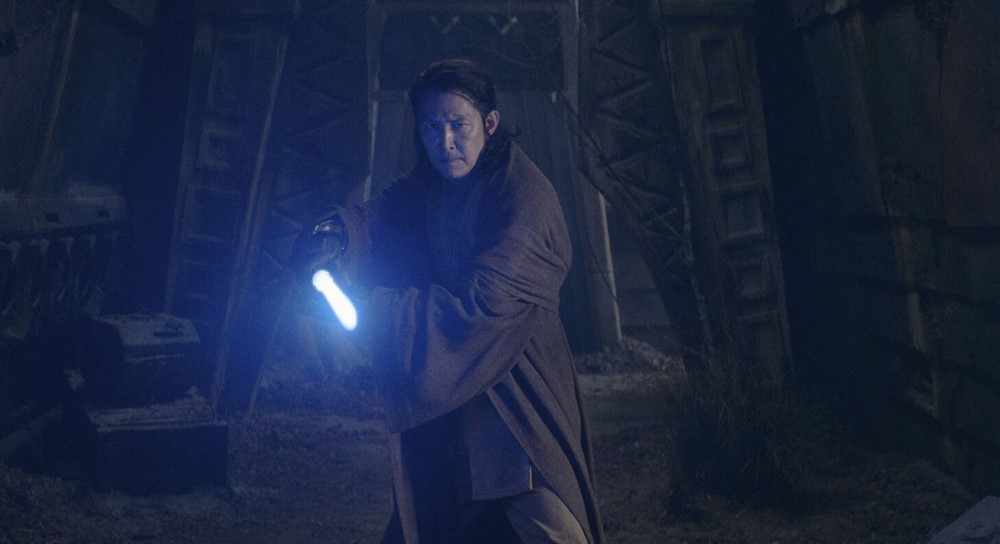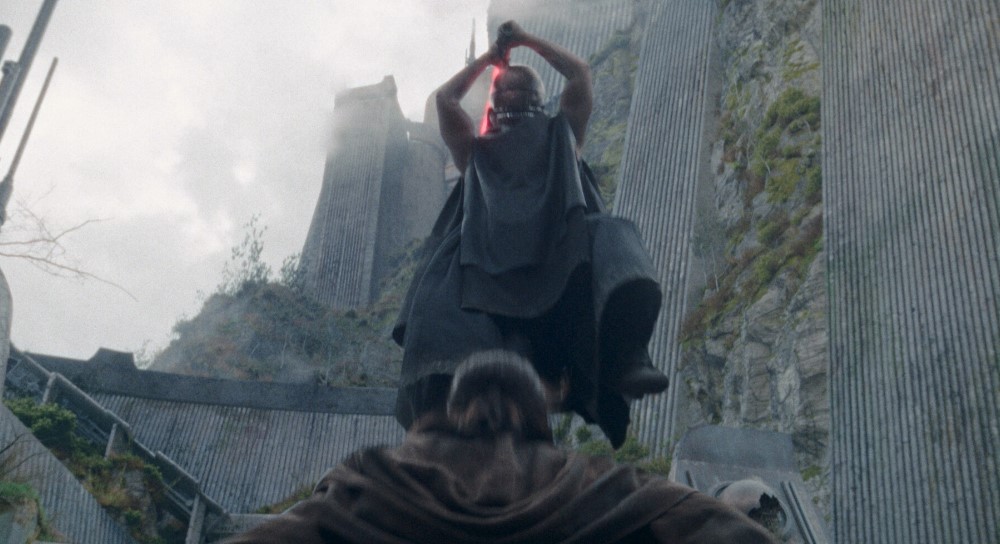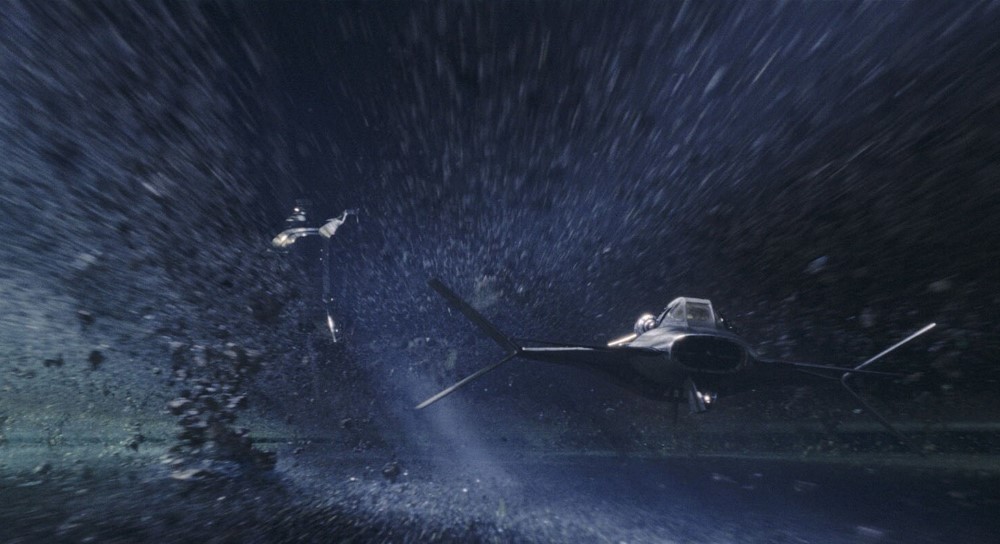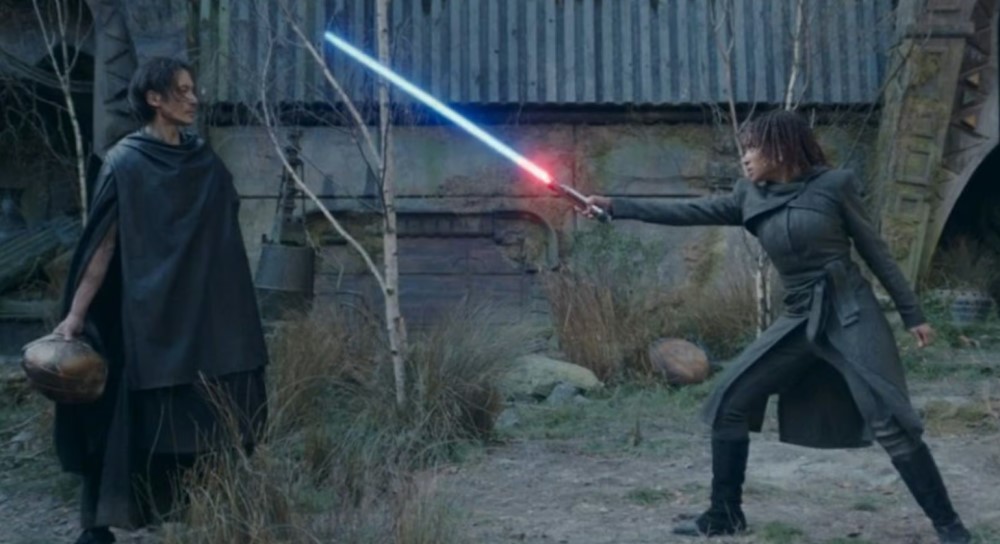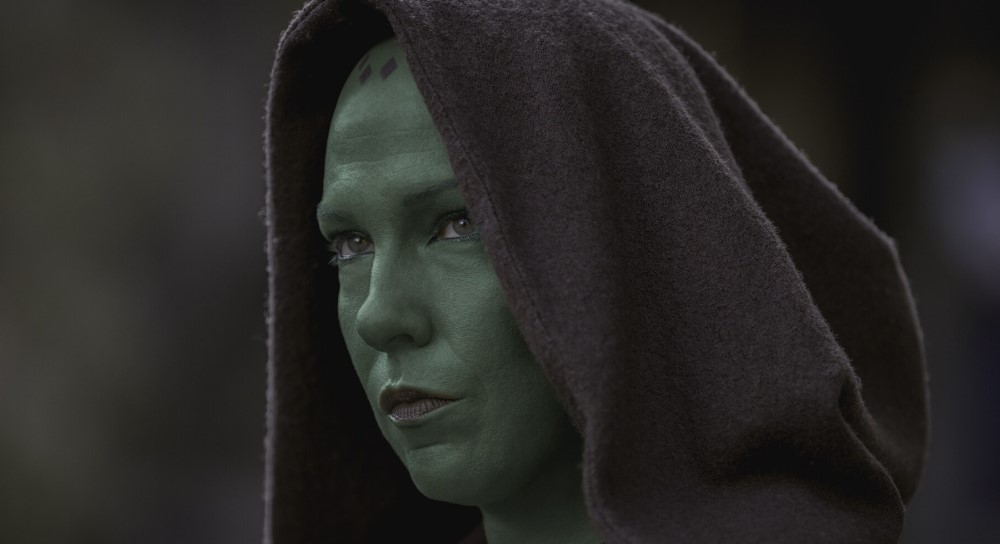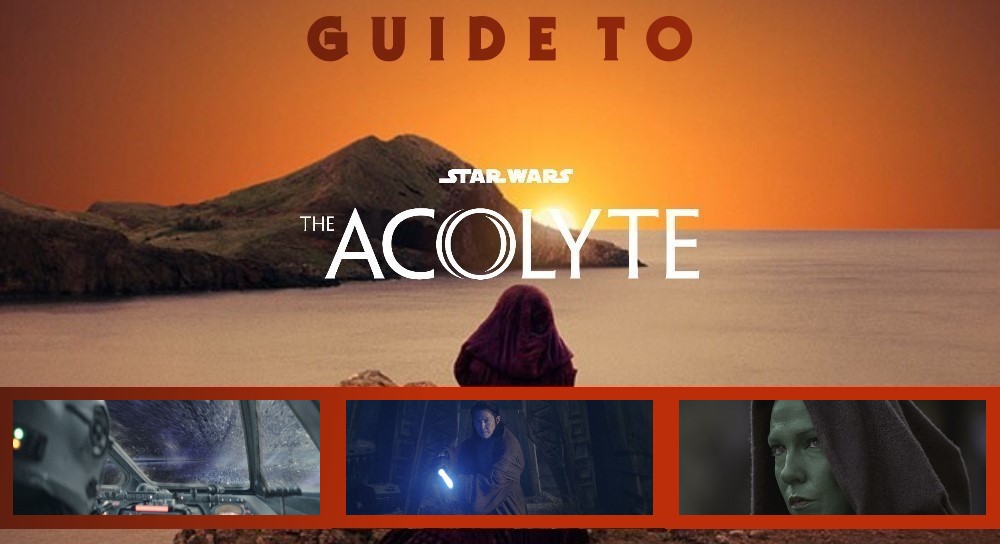Every time an episode of Star Wars: The Acolyte lands, Fantha Tracks will be giving their responses, and here are our initial gut feelings, deep dives and thoughts on episode eight of season one, ‘The Acolyte’. Beware of spoilerific elements in here.
Thanks to the internet, it is now common knowledge that George Lucas had struggled with the editing of what is now known as A New Hope, and that his then-wife Marcia Lucas helped transform a rough cut into the beginnings of the franchise we all know and love. She has been quoted as saying “I love editing and I’m real gifted at it. I have an innate ability to take good material and make it better, or take bad material and make it fair.” Just like the very first Star Wars story, The Acolyte had the building blocks of a compelling story that could have benefited from a proverbial final edit.
I was caught off guard by the self-titled season finale of The Acolyte, not only because it involved events that I hadn’t anticipated but mainly because I wasn’t expecting so much development to be packed into the last episode. The abrupt change in pacing also made it feel disconnected from what came before. Osha was more or less herself up until the first half of the sixth installment, after which she only had a few minutes of screentime before putting on the Stranger’s helmet. After a flashback-exclusive seventh installment, a slightly manipulated Osha had already gone full-on Mae mode before the halfway point of the finale. If The Acolyte was a film, we were forced to watch the third act on fast forward. A surprise to be sure, but was it a welcome one?
I had previously critiqued the first time present day Osha and Mae shared a scene, and suggested that different actresses could have made for a much more organic exchange. Their latest meeting looked and felt completely different, and clearly had a far larger (and well spent) visual effects budget attached to it. To point out the visual disparity between those two scenes may be nitpicking, but it was something that jumped out at me.
As I had hinted at the start of the review, The Acolyte was built on some really interesting ideas: A Jedi-hunting antagonist who unknowingly framed her twin. A bumbling side character revealed as a powerful villain. The protagonist and antagonist turning on and into each other, with one carrying out the very act that she had set out to prevent. Cracks forming in the Jedi Order that would eventually create the conditions that allowed for Anakin Skywalker’s fall to the dark side. On paper, these are all intriguing elements that would have made for a killer Star Wars story. And in a way we got that, but one that wasn’t organized coherently across the course of the season. We needed a Marcia Lucas.
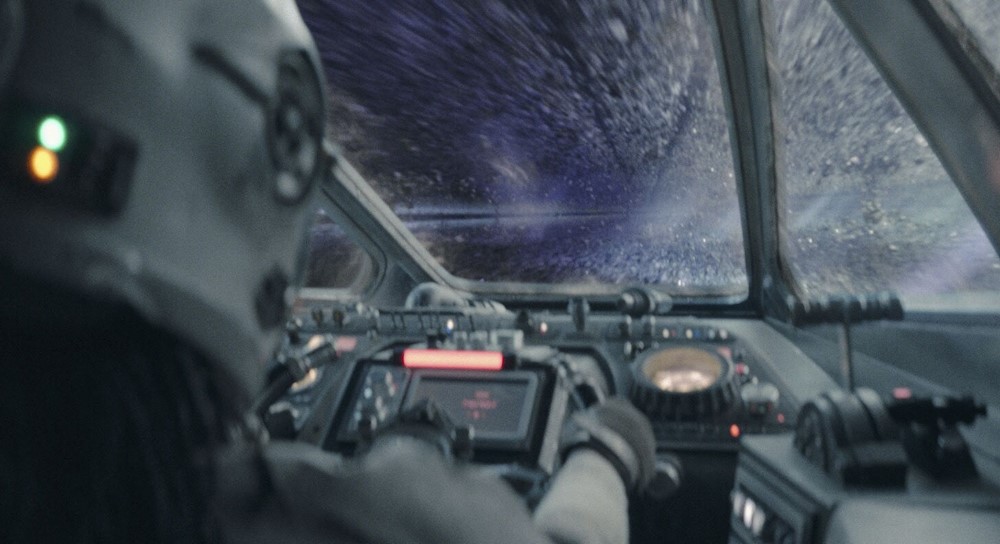 This is coming from a place of ignorance, but I also wonder if The Acolyte could have benefitted from a single director and writing team. I don’t mind the general concept of having different sets of directors and writers contributing to a show, but it inevitably introduces more potential for inconsistencies. For example, for a few moments the Stranger was almost portrayed as the hero of the show in the finale’s opening scene and it wasn’t clear if that was a byproduct of the rushed pacing or if the episode’s director and/or writers merely had a different vision of the character. Or when Bazil randomly sabotaged Sol’s pursuit of Mae, and the episode continued on as if that never happened. Did Bazil have a screen time quota to fill but the writer wasn’t sure what to do with him? Another odd moment for me was when Osha attacked Mae in a fit of rage in response to hearing the truth about Sol, which didn’t seem to make sense and felt like a consequence of leaving too much development to portray with too little available screen time to do so.
This is coming from a place of ignorance, but I also wonder if The Acolyte could have benefitted from a single director and writing team. I don’t mind the general concept of having different sets of directors and writers contributing to a show, but it inevitably introduces more potential for inconsistencies. For example, for a few moments the Stranger was almost portrayed as the hero of the show in the finale’s opening scene and it wasn’t clear if that was a byproduct of the rushed pacing or if the episode’s director and/or writers merely had a different vision of the character. Or when Bazil randomly sabotaged Sol’s pursuit of Mae, and the episode continued on as if that never happened. Did Bazil have a screen time quota to fill but the writer wasn’t sure what to do with him? Another odd moment for me was when Osha attacked Mae in a fit of rage in response to hearing the truth about Sol, which didn’t seem to make sense and felt like a consequence of leaving too much development to portray with too little available screen time to do so.
One area the show absolutely got right in my book was the lightsaber combat. Lightsaber duels are by far my favorite element of Star Wars in general, and as far as I’m concerned The Acolyte knocked it out of the park. On a broader scale, it’s also fun to observe the “evolution” of lightsaber design and utility across the non-linear history of Star Wars films and shows. Yes, I’m a fan of the Stranger’s Russian doll-style lightsaber hilt.
Last but not least, there was of course the creepy bad guy inside the cave as Osha and the Stranger departed from not-Ahch-To. As Star Wars fans, we will inevitably guess that it was Darth Plagueis. It was an intriguing cameo, but like the finale itself the scene felt a bit detached from the rest of the episode. Did he have connections to Brendok? Was he pulling the strings from behind the scenes all along? No clue, and unfortunately the span of time between learning about his existence and when he ceased to be relevant was far too short.
Unless, that is, we get a second season.
With a finale episode packed to the gills with action, intrigue, reveals and teases for the future, the pressure on Leslye Headland and team to concoct the ‘perfect’ balance must have been enormous, and while for the most part she succedded (concluding ‘Phase One’ of The Acolyte while leaving tantalising breadcrumbs for ‘Phase Two’) there was one scene which stood out for this reviewer. The episode hinges on the four-way dance of death between Osha, Mae, Qimir and Sol, but it was a far quieter, more refective scene that stole the show.
It started as an understated meeting between David Harewood’s Senator Rayencourt and Master Vernestra Rwoh, Rayencourt insistent for answers and making it very clear that the free reign the Jedi have enjoyed for so many long years would appear to be coming to an end. ‘Accountability’ was the focus of his words, and while on the face if it he may seem to be the ‘enemy’ (politicians are rarely seen as anything but, unless they’re striving for the future of Republic or the Rebellion against the evils of the Confederacy or the Empire) his words ring very, very true. Vernestra is clearly taken aback by the insinuations, and unbalanced by them. We as knowledgeable viewers with the future of these characters well in our ‘real world’ past know that much of what he says is true, and if your default position is that the Jedi are uniquely ‘good’ (thereby missing much of what George Lucas was trying to convey in the prequel trilogy and side-stepping the deliberate vagueness of Obi-Wan Kenobi’s answers to Luke throughout the original trilogy) then this won’t sit well at all. If viewing it as the grease on the pole of the descent from greatness to obsolescence for the Jedi then it makes all the sense in the world.
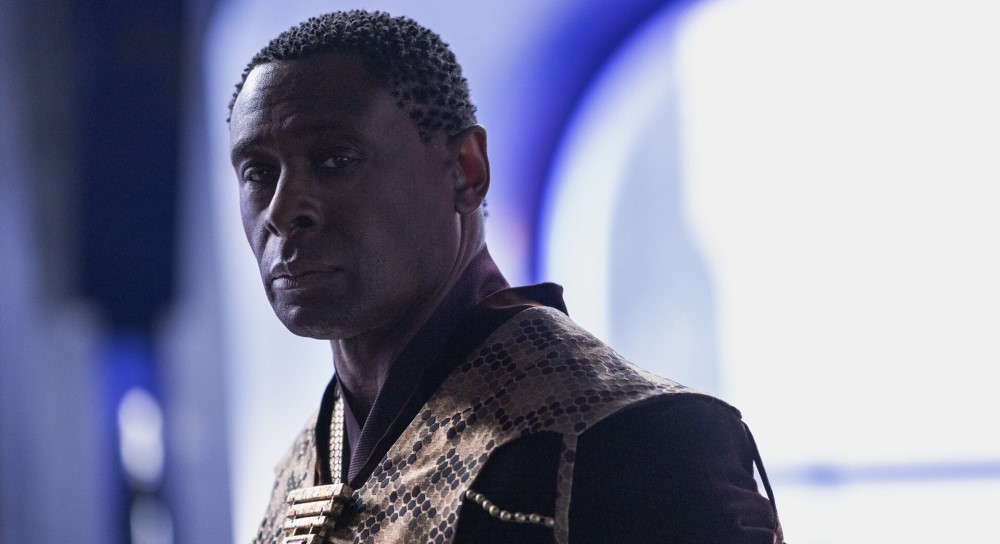 Of course, Rayencourt and his observations are far from the only moments in this eighth episode. The cast outdid themselves, the desparation of Sol bleeding through the screen as he died at the hands of Osha, her anger bleeding her lightsaber crystal from blue to red, a vivid illustration of her sense of betrayal. The fight between Sol and The Stranger lived up to Headland’s promise of a fight to rival the Maul vs Kenobi fight of The Phantom Menace, littered as it was with amazing choreography and the sense that the fight was far more than just the physical actions we see onscreen. ILM delivered stunning work as the chase between the rings gave us some incredible, silver screen quality visuals, and the end with the blink-and-you’ll-miss-it appearance of Yoda (with no mention of Frank Oz, is this his first live action appearance without the hand of the performer who gave him life being involved?) and of course the Darth Plagueis cameo being two noteworthy moments that fans will discuss until the return of the show in a second season (and all digits crossed that the ratings are string enough to justify that investment).
Of course, Rayencourt and his observations are far from the only moments in this eighth episode. The cast outdid themselves, the desparation of Sol bleeding through the screen as he died at the hands of Osha, her anger bleeding her lightsaber crystal from blue to red, a vivid illustration of her sense of betrayal. The fight between Sol and The Stranger lived up to Headland’s promise of a fight to rival the Maul vs Kenobi fight of The Phantom Menace, littered as it was with amazing choreography and the sense that the fight was far more than just the physical actions we see onscreen. ILM delivered stunning work as the chase between the rings gave us some incredible, silver screen quality visuals, and the end with the blink-and-you’ll-miss-it appearance of Yoda (with no mention of Frank Oz, is this his first live action appearance without the hand of the performer who gave him life being involved?) and of course the Darth Plagueis cameo being two noteworthy moments that fans will discuss until the return of the show in a second season (and all digits crossed that the ratings are string enough to justify that investment).
There has been plenty of ‘discourse’ regarding The Acolyte, and while a percentage of it has been negative, that vocal portion of the fandom as loud as ever, there’s been plenty to take away from the season. It’s a new era, with familiar yet fresh designs and approaches, and while the tone of the series appears to steer towards the YA crowd there’s a hard-edge to The Acolyte that is very welcome indeed. This isn’t The Mandalorian, or The Bad Batch, or Andor. The unique tones of those shows simply wouldn’t work here. This has found the balance between the grandeur of The High Republic era and the crumbling facades of the prequels, and left us with a story that requires further exploration. Let’s hope we get to find out why Qimir was so unnerved by the arrival of Vernestra and see just what The Stranger and Osha can achieve together. My gut tells me it will be terrible things….
The finale of The Acolyte, which is titled the same name, will be a topic for Star Wars fans for a long time. Some folks loved it, others not so much. It’s a lot like The Last Jedi because it challenges you to question everything you thought you knew.
This episode returns us to the present when Osha puts on the stranger’s mask/helmet, and it seems to possess her. Why is does this to her and not the stranger is one of many questions we’re faced with. Even as the stranger tries to help Osha he becomes possessed similarly to how Torbin and Kelnacca were with the eyes going black and transported to a strange place. The stranger finally pulls the helmet off of Osha and she says she had a vision of Mae with her hand outstretched, killing Sol.
Meanwhile, Sol holds Mae captive on his ship in Brendok’s orbit. Sol and Mae have two very different accounts of what happened in the fire 16 years ago. Sol accuses Mae of starting the fire and locking everyone inside, while Mae says she did it because the Jedi invaded her home. Neither one is free of guilt, but sides are always taken. Mae frees herself and stuns Sol then escapes on a smaller ship.
In one of the coolest displays of visual effects in a Star Wars series since Andor, Sol chases Mae through a field of icy shards. Mae crash lands on Brendok.
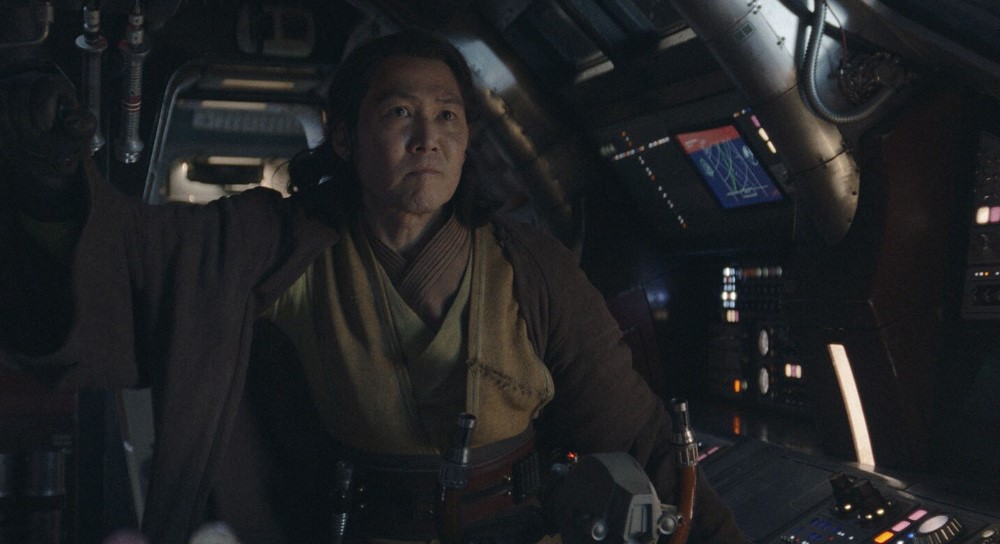 Senator Rayencourt, who famously sides against the Jedi on most issues visits Master Vernestra. Rayencourt doesn’t appreciate Vernestra’s secretive activity when it comes to a possible threat. She assured him she had the authority to act if there was no larger threat. Rayencourt questions the Jedi, which is something they aren’t used to having to deal with. He even predicts the eventual downfall of the Jedi when one snaps and cannot control their emotions. Interesting how he uses the term ‘him’. He specifically calls out a male Jedi.
Senator Rayencourt, who famously sides against the Jedi on most issues visits Master Vernestra. Rayencourt doesn’t appreciate Vernestra’s secretive activity when it comes to a possible threat. She assured him she had the authority to act if there was no larger threat. Rayencourt questions the Jedi, which is something they aren’t used to having to deal with. He even predicts the eventual downfall of the Jedi when one snaps and cannot control their emotions. Interesting how he uses the term ‘him’. He specifically calls out a male Jedi.
As Osha and the strange leave the island planet, a mysterious dark form appears from the shadows. Leslye Headland confirmed that this was Darth Plagueis. Plagueis is behind all of the dark energy that’s been hovering over everyone. To know Palpatine would kill him later on shows how badass Palpatine really was.
As the rest of the finale unfolds, Sol, Osha, Mae, and the stranger collide on Brendok. Sol admits that he killed Mother Aniseya to Mae but that he believed it to be the right thing to do. Osha overhears this and gives in to the dark side. Osha kills Sol with a Force choke, and then takes his lightsaber and bleeds the crystal so now it’s a red blade. Osha agrees to train with the stranger (he really needs a name) if he wipes Mae’s mind of any knowledge of the events. Mae is then arrested and brought before Master Vernestra. Osha leaves with her new master.
There is one more cool cameo as Vernestra requests an audience with Master Yoda. As a mystery, I believe The Acolyte did a great job of keeping us guessing. I personally loved the yin and yang of light and dark within Osha and Mae. I appreciated the parallels with Anakin’s journey. I liked how flawed the Jedi looked because it made what Luke was trying to do in Return of the Jedi that much more powerful. He was trying to recapture the goodness of the Jedi seen in The High Republic. The Acolyte is a great setup to the prequels as we see the downfall of the Jedi/Republic and the revenge of the Sith. I hope we continue Osha and the stranger’s journey together as the dark side of the Force pulls the strings no one can see.
The inaugural season of The Acolyte is over yet the story is just beginning. It also appears it was Agatha, I mean, Osha, all along. The division and harsh split wasn’t between Osha and Mae, or Mae and the Stranger, it was between Master Sol and his padawan, Osha.
Her protector. Her mentor. Her everything. Sol confessed to killing Osha’s mother 16 years ago during the tragedy on Brendok and then nothing else mattered. He lied to her as the ultimate betrayal. Only to be topped by the infamous lie and cover-up of a desperate Jedi Order, pinning the Jedi deaths on the fallen Sol. How did Master Vernestra Rwoh come to this? It’s unacceptable—but it makes for a fantastic story by Leslye Headland.
Overall, I’m happy with the culmination of Season 1 and the flight path it took. There were definitely issues—especially with some of the cadence, overly convenient occurrences, elements of dialogue, and trying to force cute elements into a sometimes wonderful, dark show—but I’ll take the tied bow of the finale.
The lightsaber battles were as good as it gets. The acting performances by Lee Jung-jae and Manny Jacinto were brilliant. The settings, throughout the season, were magical yet rugged and believable. And a cameo so strong and exciting that I FINALLY picked up the Darth Plagueis Legends novel by James Luceno.
I was somewhat relieved the inaugural season was completed once the credits started rolling—again, I liked it more than loved it—but that doesn’t stop the excitement of potentially seeing this story picked up. Any issues I had with the season are somewhat dissolved by the set-up in understanding how we eventually get to the rise of Palpatine and the near extinction of the Jedi.
Sander de Lange looks at all the reveals and easter eggs in The Acolyte – The Guide: Episode 8 ‘The Acolyte’.
Mark Mulcaster and Mark Newbold discuss the eighth episode on Making Tracks Reaction Chat: The Acolyte S1 Eps 7 & 8 – ‘Choice’ & ‘The Acolyte’.


